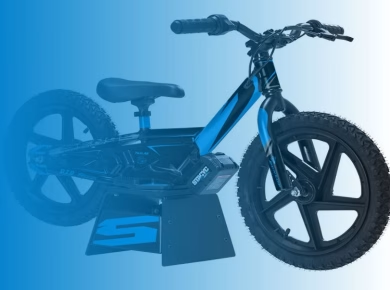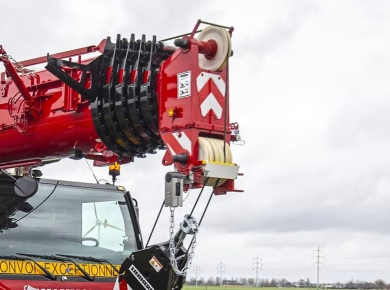When it comes to home improvement projects or professional construction tasks, the importance of having the right hole-making tools cannot be overstated. Selecting the perfect drill for your specific needs can be the difference between a job well done and a frustrating mishap. Whether you’re hanging a picture, installing shelving, or creating a space for electrical outlets, understanding the various types of drills and their applications can significantly enhance your experience and outcomes.
Understanding Hole-Making Tools
Hole-making tools encompass a range of devices designed to create holes in various materials. While most people might think of drills as the primary tool in this category, there are numerous options available, each tailored to specific tasks. This guide will delve into the intricacies of selecting the right drill based on your project requirements.
The Basics of Drills
At the core of hole-making tools is the drill. When you think about drills, you probably envision a power tool that spins a bit to bore into wood, metal, or concrete. However, drills can vary greatly in size, power, and function. There are two primary categories of drills that you should be familiar with: corded and cordless.
Corded drills are typically more powerful and can run continuously without the need for battery replacement. They are ideal for heavy-duty applications where strength and endurance are essential. On the other hand, cordless drills offer unmatched convenience and portability. They utilize rechargeable batteries, allowing you to work in areas without easy access to power outlets. The choice between these two often boils down to your specific project needs and working conditions.
Types of Drills
Understanding the different types of drills available is crucial for making an informed decision. Each type serves a unique purpose, and knowing when to use each one can save you time and effort.
1. Standard Drill/Driver
The standard drill/driver is perhaps the most versatile tool in this category. It can perform both drilling and driving tasks, making it suitable for a variety of applications. These drills typically come with adjustable speed settings and torque controls, allowing you to tackle different materials with ease. If your projects involve a mix of drilling holes and driving screws, a standard drill/driver may be your best bet.
2. Hammer Drill
If your project involves masonry work, such as drilling into brick or concrete, a hammer drill is the tool for you. This type of drill combines rotational motion with a hammering action, allowing it to break through tough materials. Hammer drills are particularly effective for creating larger holes in hard surfaces. However, they may not be necessary for lighter tasks, so consider your material needs before investing in one.
3. Impact Driver
Impact drivers are specifically designed for driving screws and bolts. They produce a high-torque force, making them ideal for fastening applications. If you frequently work with hardwoods or need to drive long screws, an impact driver can make your work smoother and more efficient. However, impact drivers are not ideal for drilling, so it’s best to have a separate drill on hand for those tasks.
4. Specialty Drills
For more specialized applications, there are various specialty drills available. For instance, a right-angle drill allows you to work in tight spaces where traditional drills cannot fit. Similarly, a magnetic drill is ideal for metalworking, as it can create holes in thick steel plates. Understanding your specific needs will help you select the right tool for the job.
Choosing the Right Drill Bit
Once you’ve selected your drill, the next step is choosing the right drill bit. The bit you choose will affect not only the quality of the hole but also the overall effectiveness of your drilling task. Here are several common types of drill bits and their applications.
Twist Bits
Twist bits are the most common type of drill bit and can be used on various materials, including wood, metal, and plastic. They come in different sizes and lengths, making them versatile for many applications. When selecting a twist bit, consider the material you’re working with and choose a bit designed for that specific purpose.
Spade Bits
Spade bits are excellent for drilling large holes in wood. They consist of a flat blade with sharp edges that can quickly bore through softer materials. If you’re creating holes for plumbing or electrical work, spade bits can be a valuable addition to your toolkit.
Auger Bits
For deep and clean holes in wood, auger bits are the way to go. They feature a spiral design that helps remove shavings as they drill, preventing clogging. Auger bits are particularly effective for larger diameter holes and can be used in both manual and power drills.
Masonry Bits
If your project involves drilling into brick, concrete, or stone, masonry bits are essential. These bits typically have a carbide tip that can withstand the rigors of hard materials. Using the right masonry bit can save you time and ensure a clean hole without damaging your drill.
Considerations for Power and Speed
The power of your drill is another important factor to consider. Drills are rated in volts (for cordless models) or amps (for corded models). Higher voltage or amperage generally translates to more power and the ability to handle tougher materials. However, it’s essential to balance power with control. A drill that’s too powerful can be difficult to manage, especially for precision tasks.
Speed settings are also crucial. Most modern drills offer variable speed options, which allow you to adjust the RPM based on the material you’re working with. Slower speeds are better for drilling into harder materials, while faster speeds work well for softer surfaces. Understanding how to adjust speed and power effectively can significantly enhance your drilling experience.
Safety First: Best Practices While Drilling
Before you start your project, it’s crucial to prioritize safety. Drilling can be hazardous if proper precautions aren’t taken. Always wear safety goggles to protect your eyes from dust and debris. Additionally, using a dust mask can help prevent inhalation of harmful particles, especially when working with materials like concrete or wood.
Ensure that your workspace is clear of clutter and distractions. Having a clean area to work in not only helps you focus but also reduces the risk of accidents. Finally, make sure to secure your workpiece properly. Clamping it down can prevent it from moving while you drill, ensuring a more accurate and safer result.
Conclusion: Making the Right Choice
Selecting the right hole-making tool may seem daunting, but with a little knowledge and consideration, you can make an informed decision that suits your needs. Take the time to assess your projects, the materials you’ll be working with, and the specific tasks at hand. By understanding the various types of drills and their applications, you can ensure that you choose the right tool for the job.
Investing in quality tools and bits will not only make your projects easier but also enhance the quality of your work. Remember, having the right equipment is the first step toward achieving professional results in your DIY endeavors. So, whether you’re a seasoned pro or just starting, equip yourself with the knowledge and tools to make your drilling tasks efficient and enjoyable. Happy drilling!


